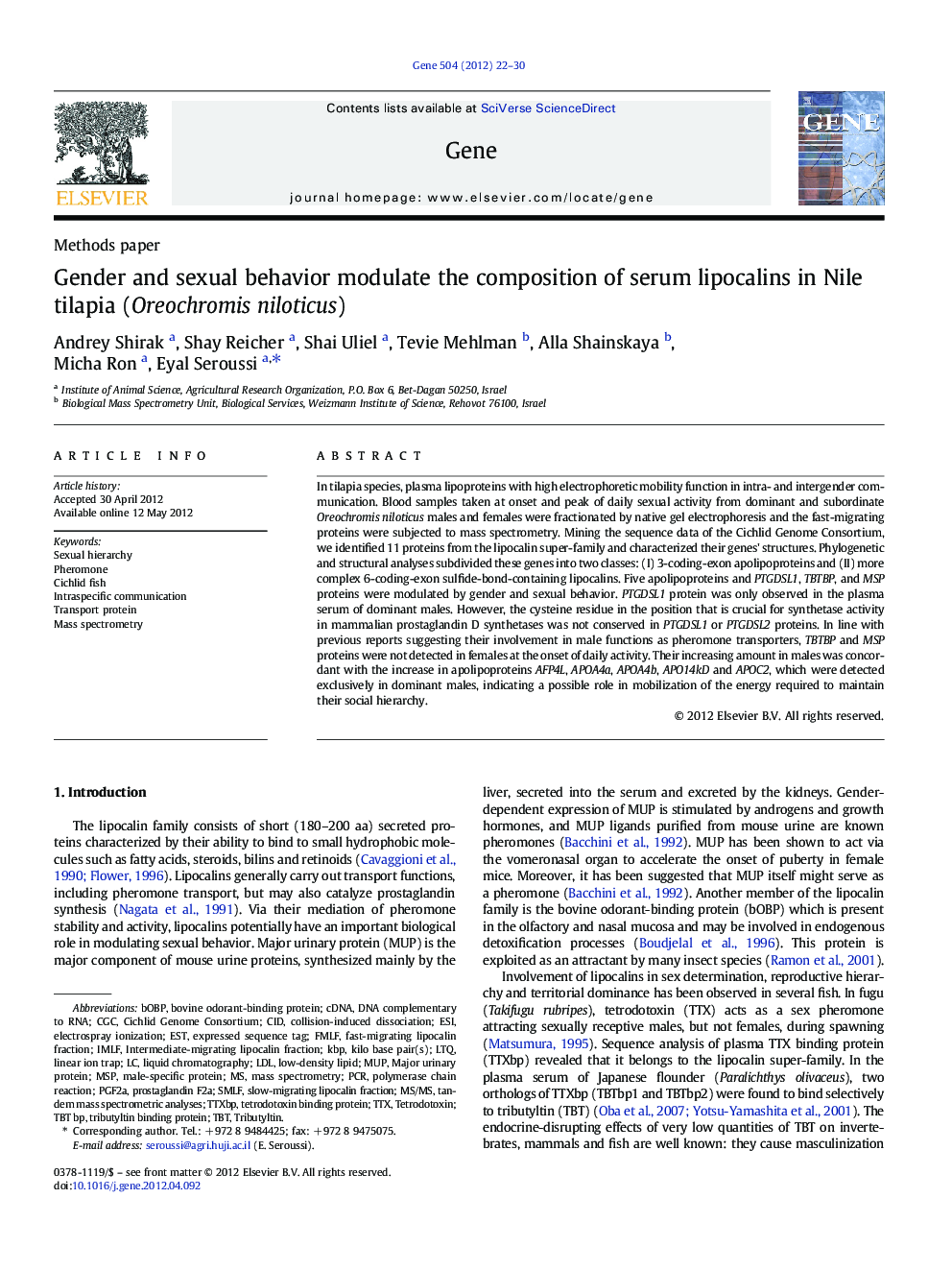| Article ID | Journal | Published Year | Pages | File Type |
|---|---|---|---|---|
| 2817789 | Gene | 2012 | 9 Pages |
In tilapia species, plasma lipoproteins with high electrophoretic mobility function in intra- and intergender communication. Blood samples taken at onset and peak of daily sexual activity from dominant and subordinate Oreochromis niloticus males and females were fractionated by native gel electrophoresis and the fast-migrating proteins were subjected to mass spectrometry. Mining the sequence data of the Cichlid Genome Consortium, we identified 11 proteins from the lipocalin super-family and characterized their genes' structures. Phylogenetic and structural analyses subdivided these genes into two classes: (I) 3-coding-exon apolipoproteins and (II) more complex 6-coding-exon sulfide-bond-containing lipocalins. Five apolipoproteins and PTGDSL1, TBTBP, and MSP proteins were modulated by gender and sexual behavior. PTGDSL1 protein was only observed in the plasma serum of dominant males. However, the cysteine residue in the position that is crucial for synthetase activity in mammalian prostaglandin D synthetases was not conserved in PTGDSL1 or PTGDSL2 proteins. In line with previous reports suggesting their involvement in male functions as pheromone transporters, TBTBP and MSP proteins were not detected in females at the onset of daily activity. Their increasing amount in males was concordant with the increase in apolipoproteins AFP4L, APOA4a, APOA4b, APO14kD and APOC2, which were detected exclusively in dominant males, indicating a possible role in mobilization of the energy required to maintain their social hierarchy.
► We describe 11 tilapia-serum lipocalins derived from genes with 3 and 6 coding exons. ► Expression of both groups of genes is modulated by sexual behavior. ► Apolipoprotein expression reflects mobilization of lipid energy to sustain dominance. ► TBTBP, MSP and PTGDSL proteins are associated with pheromone transport. ► Dominance pheromones derived from lipid metabolism may ensure honest signaling.
